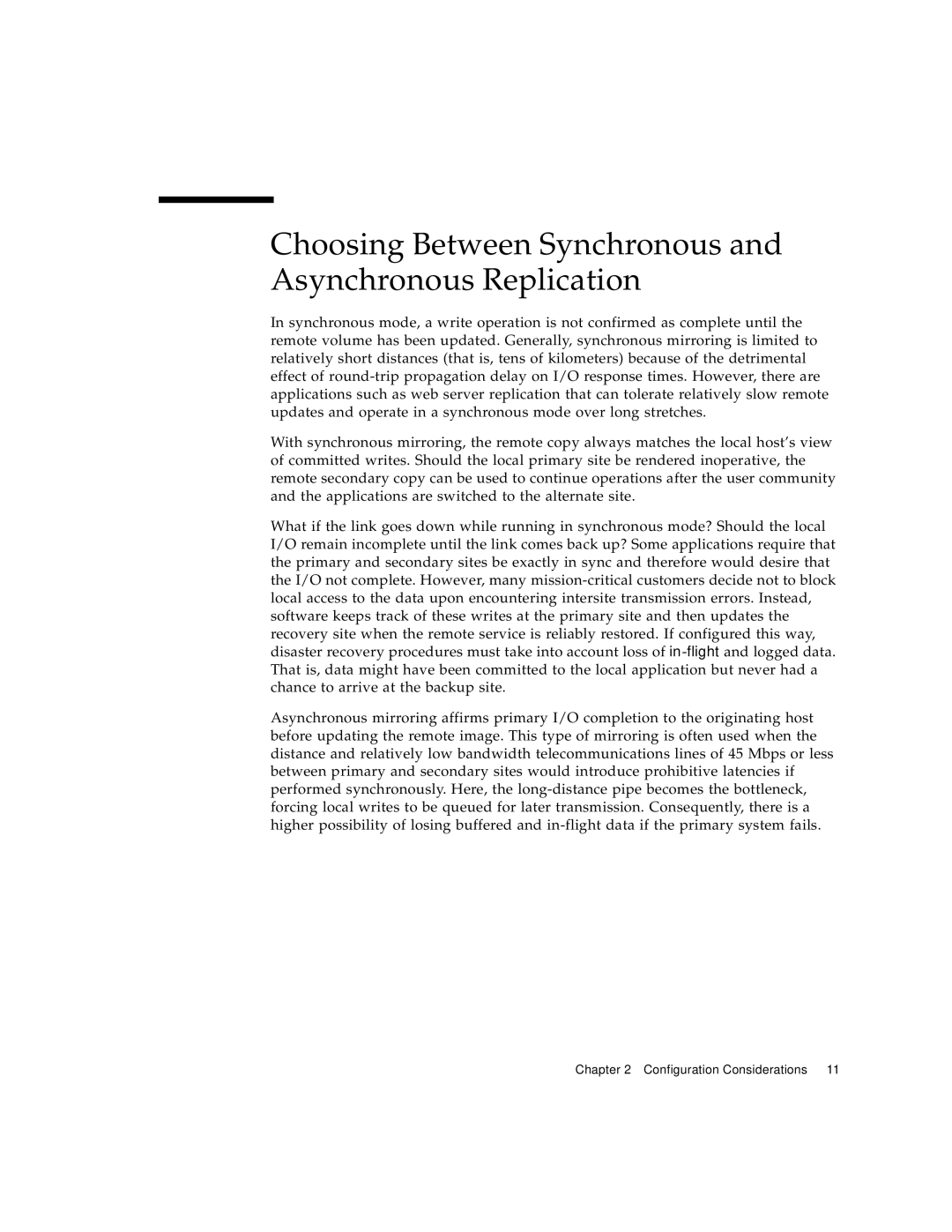Choosing Between Synchronous and Asynchronous Replication
In synchronous mode, a write operation is not confirmed as complete until the remote volume has been updated. Generally, synchronous mirroring is limited to relatively short distances (that is, tens of kilometers) because of the detrimental effect of
With synchronous mirroring, the remote copy always matches the local host’s view of committed writes. Should the local primary site be rendered inoperative, the remote secondary copy can be used to continue operations after the user community and the applications are switched to the alternate site.
What if the link goes down while running in synchronous mode? Should the local I/O remain incomplete until the link comes back up? Some applications require that the primary and secondary sites be exactly in sync and therefore would desire that the I/O not complete. However, many
Asynchronous mirroring affirms primary I/O completion to the originating host before updating the remote image. This type of mirroring is often used when the distance and relatively low bandwidth telecommunications lines of 45 Mbps or less between primary and secondary sites would introduce prohibitive latencies if performed synchronously. Here, the
Chapter 2 Configuration Considerations 11
